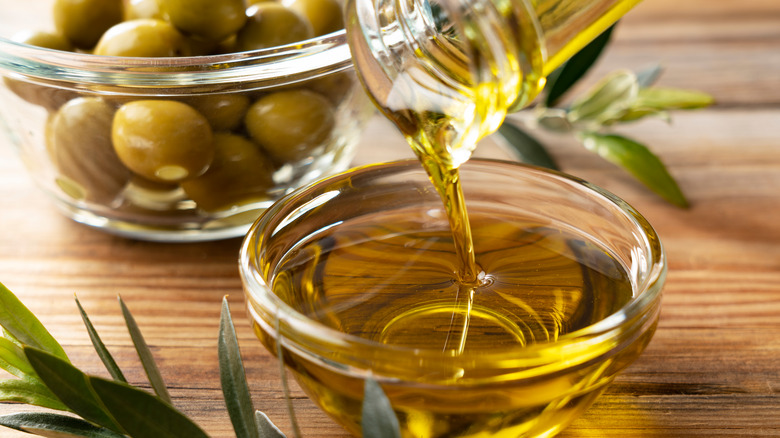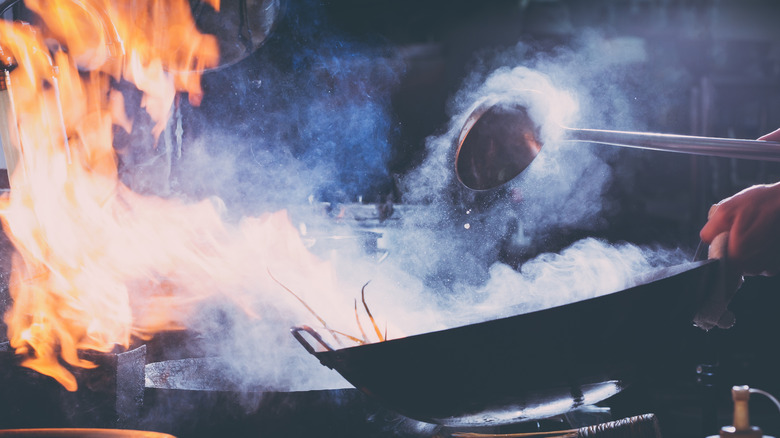How Does Olive Oil's Smoke Point Differ From Other Oils?
If you've ever been in the middle of cooking dinner and heard that dreaded, jarring beep coming from your ceiling, you are likely familiar with an oil's smoke point. You're probably also familiar with how quickly your pan can go from sizzling to open-the-window-ASAP smoky. A smoke point is a fine line for fats that once crossed, there is no turning back.
The smoke point of an oil is the highest temperature you can heat it to before its fats start to break down and smoke (via Healthline). Once oils hit that point, not only can they start the dance with your smoke alarm, they can become damaged and may even become unhealthy to consume. Fats and oils fall on a spectrum from low to high smoke points, with corresponding stability when used for cooking. But where does everyone's beloved olive oil land and when should you choose to use it over other options?
A smoke show star
The first thing to know is not all olive oils are the same. Extra virgin olive oil lands between 350 to 410 degrees Fahrenheit on the smoke point spectrum, according to the North American Olive Oil Association. Regular or light olive oil comes in a bit higher, at 390 to 470 degrees Fahrenheit. How does this fare on the culinary continuum? It's pretty solid.
Real Simple lists temperatures for slow roasts, braises, and cakes usually lingering around 325 to 350 degrees Fahrenheit. Crispier, shorter roasts like chicken or bubbly cheese require slightly higher temps of 375 to 400 degrees Fahrenheit. Stovetop cooking is a bit more difficult to measure, but sautéing comes in around 350 degrees Fahrenheit and pan frying 375 (via HestanCue). Searing and stir-frying require temperatures a bit higher, at 425 degrees Fahrenheit.
You'll probably want to go with an oil with a higher smoke point for something like deep frying. Bon Appétit recommends vegetable oil, which has a smoke point between 400 and 450 degrees Fahrenheit. Still, olive oil is a versatile option if you choose the right one. Since extra virgin olive oil has a higher smoke point, it's a safer bet for deep frying than the regular variety. However, there is one rule of thumb that trumps any temperature chart — when an oil starts to smoke, it's toast.

